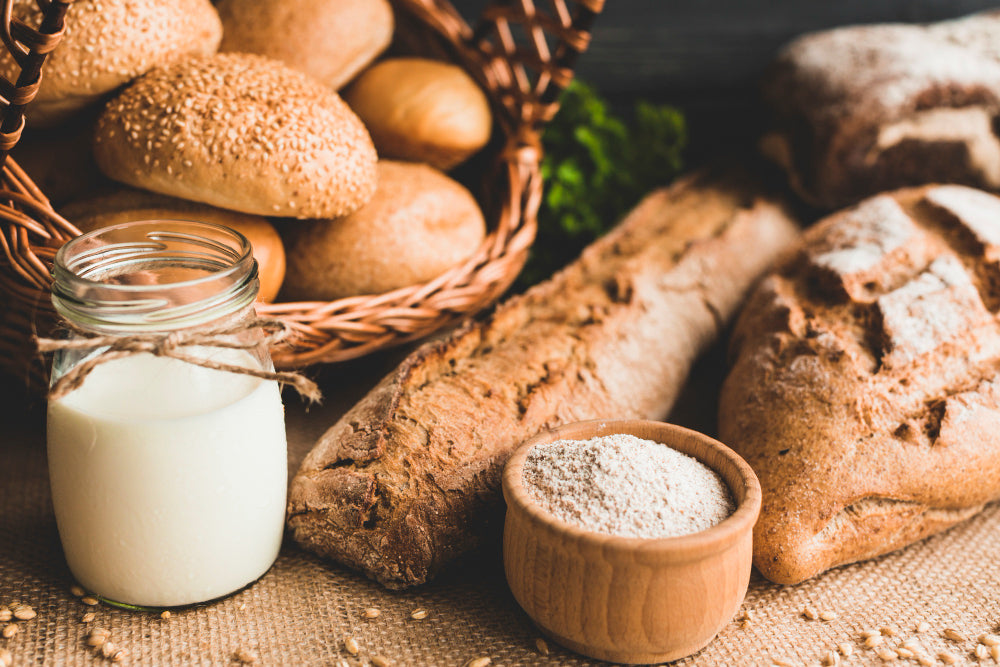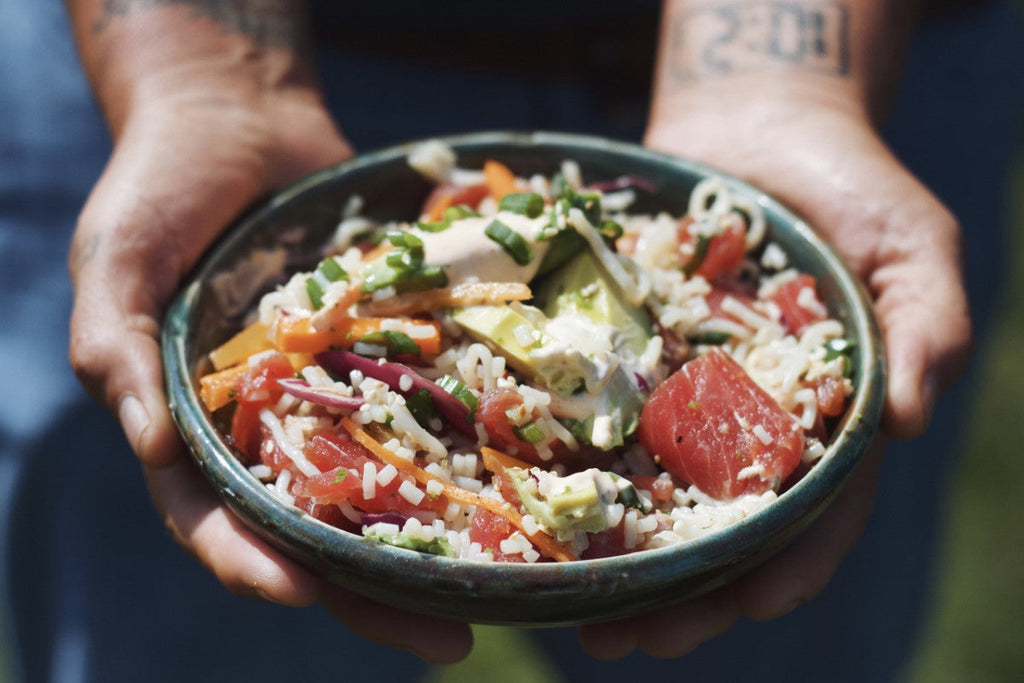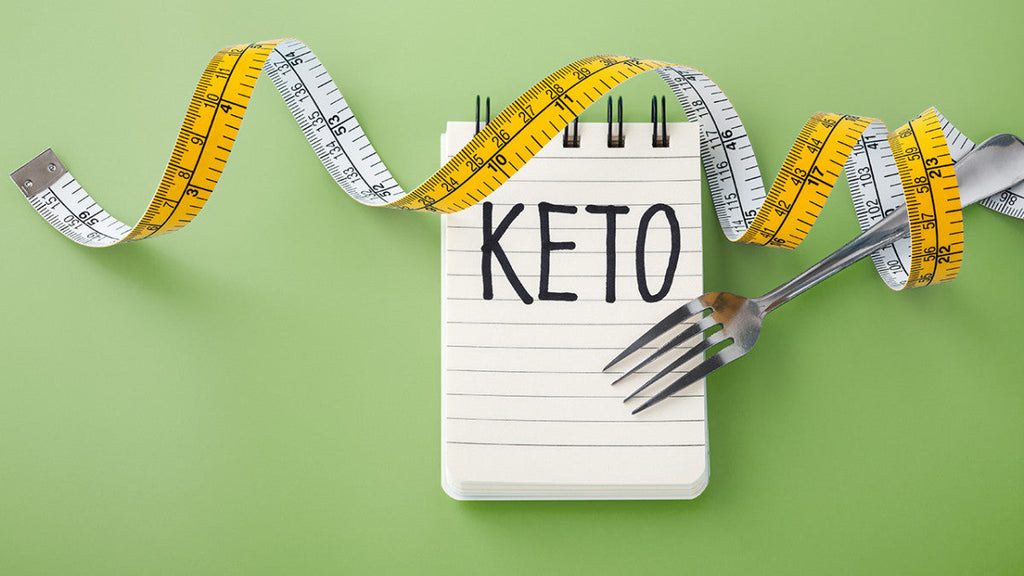Sugar and Keto: How Much Sugar Can I Have on Keto?

If you're following a keto diet plan, you've likely wondered how many grams of sugar you can have per day while keeping your body in ketosis. It's a common question, but there are several factors at play.
When you start keto, your sugar cravings will likely subside within a few days. But of course, they can return when you see a yummy-looking dessert on a commercial or a big carbohydrate-heavy meal (that looks and smells delicious). Here’s what you need to know about sugar, sugar cravings, and keto.
The Run Down on Keto and Sugar
The ketogenic diet is commonly referred to as "keto." It's a high-fat, low-carb way of eating that shifts your body into a fat-burning state called ketosis. When your body reaches ketosis, it taps into your fat reserves for energy rather than relying on your intake of carbohydrates.
Of course, there are other benefits to avoiding sugar, but avoiding sweets on the keto diet can be especially crucial to your success.
It may surprise you that many foods we don't think of as "sweets" still contain too much added sugar. Sugar consumption is ubiquitous in the American diet, even in seemingly nutritious foods. We call these sugars "hidden sugars" because they can be hard to identify without reading labels. Items like pasta sauce, salad dressings, breads, rice, and noodles might not necessarily seem like desserts, but they contain carbohydrates (dietary sugars).
On the keto diet, you’ll generally need to keep your daily carbohydrate intake to 20-50 grams of sugar. It can be helpful for beginners to take a ketosis test, which measures the presence of ketones in your breath, blood, or urine. Blood tests are the most accurate way to measure ketones, and it’s generally a good idea to visit your health professional before beginning any diet, including keto.
It may take some trial and error to achieve ketosis. Many folks prefer to start with a strict limit of 20 grams of sugar per day and then see how many grams they can take while still keeping their body in ketosis. Once you know your metabolism and how your body handles sugar, you'll be able to hit the right balance.
Surprising Sources of Hidden Sugar
Hidden sugars are often a concern for those on keto. They can sneakily increase your carbohydrate intake (and derail the ketosis process). It’s a good idea to learn how to check foods for hidden sugar so you can avoid them or find alternatives.
Here are a few ways to find hidden sugar (and track your carbohydrate intake):
- Read Nutrition Labels: At the beginning of keto, nutrition labels are your biggest ally. Always check the labels on packaged foods for the carbohydrate and sugar content. Remember that sugar can come in other forms and names, including sucrose, fructose, corn syrup, and dextrose.
- Watch Out for Low-Fat Products: Many low-fat products have what's called a "health halo" effect. We view them as healthy, but to keep up the delicious, crave-worthy taste, manufacturers might add more sugar. Full-fat versions of foods are often more likely to be keto-friendly (and taste better, too).
- Cut Back on Processed Foods: The more whole a food is, the less likely it will contain hidden sugar (see salad dressings and pasta sauces, as mentioned above). The closer a food is to its natural state (e.g., an apple versus apple sauce versus apple pie), the healthier it will generally be.
While these guidelines won’t work for all hidden sugar, it can help you make a lot of progress. Get savvy about checking labels regularly. You can learn so much about what’s contained in a product just by checking out the back.
Is Sugar Bad for Us?
Is sugar really bad? It's not necessarily bad for us to have a little sugar now and again, but unfortunately, refined sugars don't have a lot of health benefits. Sugar from cane and sugar beets is processed before it becomes table sugar. High fructose corn syrup is ubiquitous in "sugar-sweetened beverages" and even fruit juice.
Natural sugars in fruits and vegetables include fiber, vitamins, minerals, and antioxidants. Eating fiber slows down the absorption of sugar in our bodies, keeping our blood sugar levels stable. Likewise, lactose, the natural sugar in milk and dairy products, comes with nutrients such as calcium, vitamin D, and protein. Even though there are some carbohydrates (sugars) in these foods, there's generally enough benefit to far outweigh the sugar impact.
Refined sugar, on the other hand, isn't a diet superstar. It's a simple carbohydrate, meaning it gives us a quick energy boost and then a crash. This is why marathon runners often carry carbohydrate-heavy snacks—it gives them that quick surge to keep going. However, during normal daily activities, rapid spikes in blood sugar can cause us to crash and feel even more tired.
Sugar is a vital component of fermentation and baking. It helps to leaven bread. It can also help ferment foods and act as a preservative. Sugar is often added to canned jams, jellies, and fruits because it inhibits microbial growth and extends the shelf life. Brown sugar, raw sugar, and sugar in maple syrup seem more "natural" and add a depth of flavor to your foods (but will still derail your diet).
The biggest reason sugar appears in so many foods is that it enhances the flavors. It creates a balance in savory foods (as in sauces). It reduces bitterness and boosts the taste profile of many dishes and drinks. Sugar is found in many breakfast cereals, bars, and other food products that seem like they might be part of a healthy diet. Always check the ingredients list because they may have large amounts of different types of sugars and sweeteners.
Sugar has its place, but not as a main ingredient. Excessive sugar intake has been linked to a higher risk of obesity, type 2 diabetes, heart disease, dental problems, metabolic syndrome, and inflammation.
The Benefits of Cutting Sugar
Cutting your sugar intake, even if you’re simply following a low-calorie or low-carbohydrate diet, has plenty of benefits. In a keto diet, it’s a must. Fortunately, there are quite a few benefits to cutting back (or cutting out) sugar.
- Improved Weight Management: Sugar is linked to weight gain. Cutting back on sugar will almost certainly result in weight loss.
- Better Blood Sugar: If you are managing conditions like diabetes, then reducing sugar intake can help you feel good and keep your blood glucose levels consistent.
- Lower Risk of Heart Disease: Sugar is linked to an increased risk of heart disease. If you want to improve cardiovascular health, ditch the sweets.
- Enhanced Dental Health: Your dentist wasn’t lying to you. Sugar plays a big role in tooth decay. Less sugar improves dental health and lowers your risk of cavities.
- Lower Risk of Certain Types of Cancer: While studies are still looking at the connection between high-sugar diets, inflammation, and cancer, there appears to be a correlation.
- Boosting Energy Levels: You’d think that sugar would give you more energy (and it does at first), but if your energy levels are unstable, cutting sugar can help you stabilize and keep your energy levels more evenly paced.
6 Ways to Cut Sugar on Keto
So, what do you do if you're on keto and you'd still like to enjoy your favorite carb-laden dishes? Well, there are a few great keto diet hacks that can help, including It's Skinny (we'll explain).
1. Opt for Low-Carb Sweeteners
There are several keto-friendly natural sweeteners on the market, like stevia, erythritol, and monk fruit. Many of these sweeteners are good for baking and for sweetening up your morning cup of coffee. Keep in mind, though, that baked goods and other treats can still contain carbohydrates and are fairly processed. While they might seem like healthier choices, check the ingredient list. Diet soft drinks and energy drinks can contain artificial sweeteners that make you crave real-deal sugary drinks.
2. Read Labels and Track Carbs
Nutrition labels are your best tool for tracking carbohydrates. Measure your foods and write down your carb intake, especially at first. Many people are surprised that what they thought was a portion size or serving was way off. They might assume that an item is made with whole grains and other healthy ingredients only has small amounts of sugar. If you read labels, you'll find that hidden sugar and keep yourself in ketosis.
3. Enjoy Whole Foods
Enjoy foods as close to their natural state as possible. Berries are relatively low in carbohydrates but still taste like sweet snacks and are a healthy choice. For dessert, enjoy them with some whipped heavy cream. You can also have dark chocolate (check the labels to make sure you're keeping it within range).
4. Swap for Your Favorites
If you crave carbohydrates and sugar-heavy foods, consider ways to modify the recipe in a keto-friendly way. For example, avocado mousse or chia seed pudding sweetened with cinnamon. For a guilt-free treat, you can also try making our keto-friendly rice pudding with It’s Skinny Rice.
5. Avoid Deprivation
This brings us to our next point—don’t deprive yourself. If you're following keto, let go of the idea that you can't have full-fat cheese, cream, or bacon! Those are the benefits of a keto-friendly diet. The more you tell yourself that you can't have something, the more it feels like punishment. You'll feel inclined to throw in the towel, but don't!
6. Say YES to (Keto-Friendly) Pasta
What is the secret to success on a keto diet? Learning to remake the foods that you love in a keto-friendly way. The best way to do that is with It's Skinny! It’s Skinny Pasta comes in 4 delicious types: Spaghetti, Angel Hair, Fettuccine, and Rice. It’s available in Organic and Traditional styles.
Thanks to a special ingredient called konjac, It’s Skinny has zero net carbohydrates and only nine calories per serving. You can top it with all your favorite proteins, cheese, and more! It’s Skinny takes just seconds to heat up—perfect for a weeknight dinner, pre-workout meal, or any time you just want some carby comfort (without the carbs).
Don’t miss our latest keto-friendly comfort food, Skinny Mac! We’ve taken boxed mac and cheese to the next level. It’s ultra-creamy, rich, and flavorful. This is the perfect dish when you want something indulgent but don’t want to take yourself out of ketosis. Consider your cravings conquered!
If you’re ready to beat sugar cravings and stay within your sugar grams (while still staying full and satisfied), It’s Skinny is a delicious answer. The less you feel punished and deprived, the more likely you will be to stick to your guns and make progress on keto! With It’s Skinny in your corner, you’ve got this!



















































